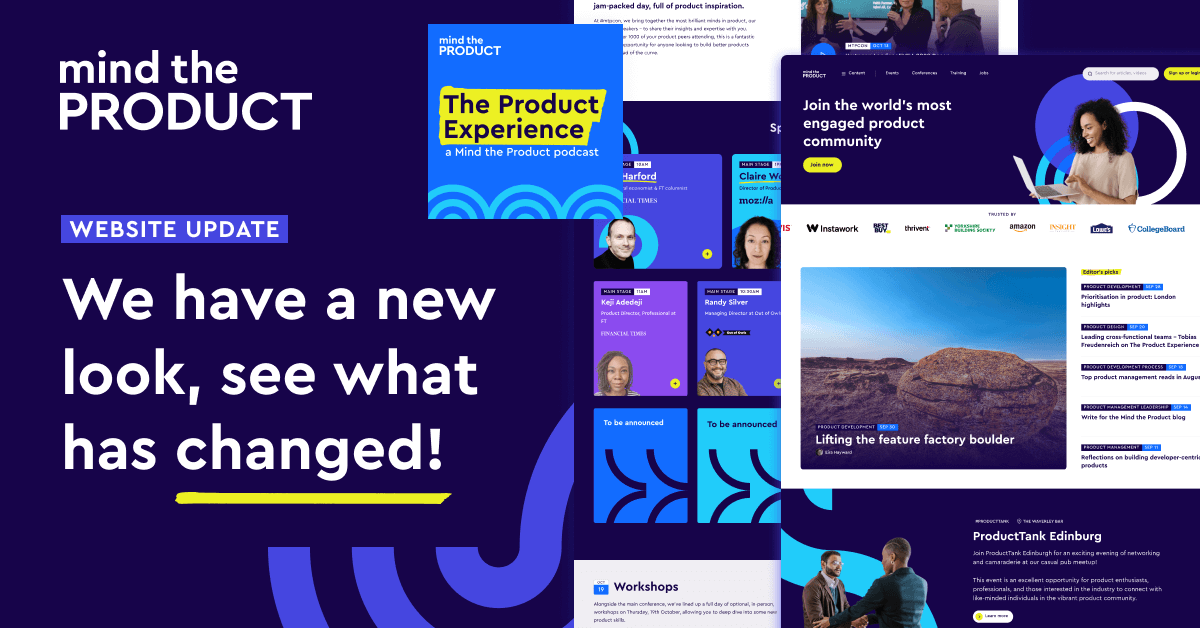You can get a lot of highly valuable information from the white space between all the words we read every day—does that sound like magic?
In the following post, I explain why this has nothing to do with magic but it can be a very powerful tool for every product person.
When I was at school I used to struggle when we had to do a summary of a book chapter or an essay. I remember very well my teacher’s question ‘where did you find that in the text?’ and I would search desperately for the section I thought contained my “facts”. Often I found that I’d read between the lines, or as my teachers said ‘that comes out of your imagination’.
At school, I learned in the end that you should only include facts in a summary and leave out any interpretation. Although this is important for journalism or scientific reports, I had to learn as a product person it’s important to use your imagination and to be able to read in between the lines.
Reading between the lines
Like any of us, the way I receive information is based on my background and knowledge, as well as my mindset, feelings, and mood. When I read through a publication, I add my personal interpretation to whatever I read. I create an inner picture of the content—and sometimes the author. I find trigger words that will catapult me to memories of something else I’ve read, heard or seen recently, or some I’ve experienced in the past, and it might lead to a good or bad feeling. Depending on my personal state of mind I’ll agree or disagree, like or dislike what I read or parts of it and it will lead me to my outcomes.
Adapt this in a professional way
If I read between the lines of a publication in a professional way, with a product person’s mindset, I can use this natural behaviour to get greater understanding and insights.
My product person mindset contains knowledge of the market, knowledge of the main products, latest features and trends, typical customers (personas), and competitors. It may also be that I know someone, a person or a company from a relevant profession, or recognise cultural differences, or think of something that I have learned, to name just a few of the possible influences on what I read.
When I started intentionally to read between the lines I discovered it could be a really strong and important tool to gather knowledge and help me to get my products on the right track. It may take a little practice to adopt a professional mindset on purpose, but it will come naturally and automatically to you in no time.
Changing your mindset
The important thing is to be aware of the outcomes of your mindset. You may discover that you can translate this better into practice if you imagine a column for comments at the side of the publication you’re reading. It might be absolutely helpful to make notes about what you have read between the lines.
Clarity about where your outcomes and ideas come from enables you to explain and discuss them with any of your shareholders or to get proof from your research. This is important as it will lead you to decisions around your product.
Here’s a straightforward example from my experience as a product manager for industrial printers. The technologies used in certain areas of the market reached their technical limits some years ago so there is little differentiation between providers. Nevertheless, our competitors have tried to come up with better features for their equipment.
Some have looked to address a customer’s pain point by claiming that their thermal inkjet printers will work at a very high speed. Consequently, I’ve been asked by the sales team and customers if we’re able to reach this speed too. I know that all manufacturers use the same print engine from the same OEM, and I know that this speed can only be achieved by cutting down massively on the print resolution.
So the question was not whether we can also reach that speed, but whether we need to change the way we communicate about the limits of our technology, or invest in innovation. As we had solutions available to meet the speed as well as resolution criteria
Climb the next stage and read the gaps
Even more powerful and interesting for me is reading the gaps of any publication.
I’m sure every one of you has often read something where they have been left with a feeling that something was missing or a question has not been answered.
If you believe this and you give it a little research you’ll mostly find out that you were right.
In product management, we tend to leave out things we’re not proud of or we see as a disadvantage or gap even or sometimes even more in professional publications.
So to start to look for these gaps intentionally is giving you some good insights about your customers, markets, competitors and business partners and it will be also helpful to ask the right questions.
Do it reverse and you’ll master the power of gaps
The next step is to check your own situation for gaps. The quality of your public correspondence, marketing, and so on will powerfully increase if you close gaps that expose something you don’t want to talk about and insert gaps if you want to give a space for interpretation.
For example, I was once part of a team that looked at how to manage and communicate a name change for the company I worked for. We worked on a press release on the new name, and agreed that we wanted it to focus on how our customers could expect even better service from us. This was because we had implemented some organizational improvements, with the name change being the logical conclusion.
The name change had some aspects that weren’t relevant for our customers. We were going with the name of our parent company even though the name wasn’t well known in Europe. After we had completed the press release, with all its positive messages, I asked the team to read it again to see if any of the peripheral aspects that we had left out could lead critical customers to question their confidence in us. We identified a gap because we hadn’t talked about the name choice and so we could address it before it led to any noise in the industry.
In summary
- Become aware that you’ll never be neutral about any information you receive.
- Start to use this consciously—in a professional way
- Find the left out information and do your research
- Apply the second and the third step to your own public relations
Discover more product management career content. For even more content on a range of product management topics, see our Content A-Z.







Comments
Join the community
Sign up for free to share your thoughts